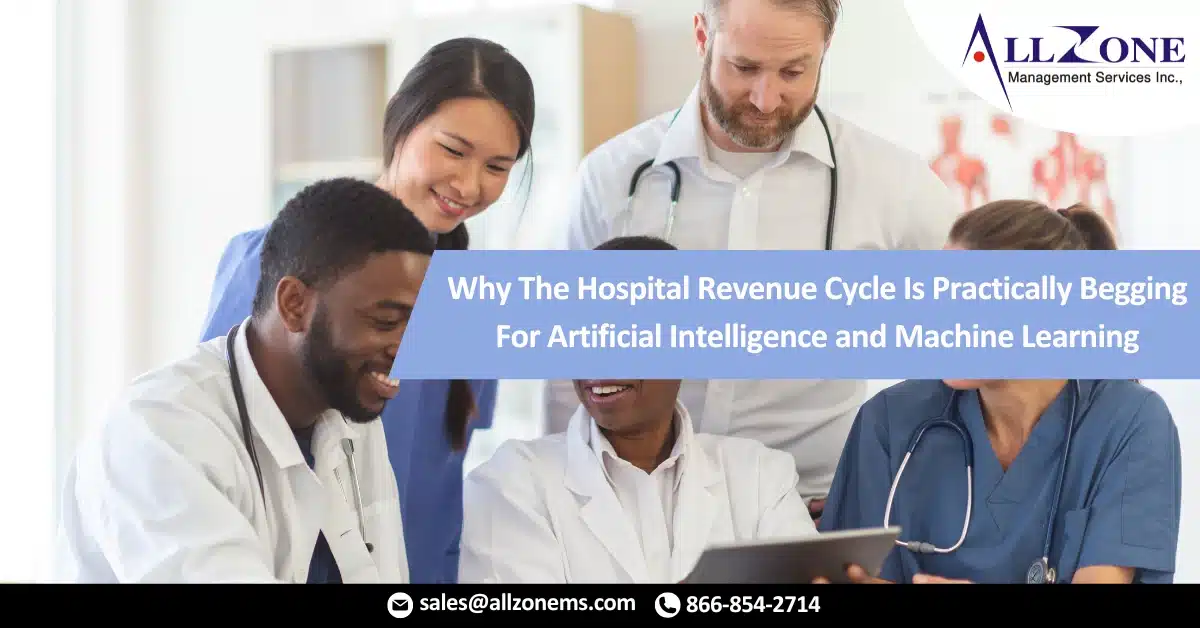When it comes to artificial Intelligence and machine learning, most often we hear them discussed in a clinical context. But that’s not the only realm where AI and ML could make an impact. In fact, revenue cycle is well-suited to AI and MI. According to Nick Giannasi, chief AI officer for Change Healthcare, it’s almost the perfect problem for AI and ML to solve.
“You basically have a lot of historical transactions, basically claims, and then information that comes back: what was paid, what wasn’t paid, what was the reason. When you have that in large volumes, it’s really hard to represent that with human knowledge or rules because there are lots of combinations,” Giannasi said. “But it’s a perfect setting for machines to learn from that history and the patterns, and use that to basically score and predict the future and change it.”
The two largest areas of opportunity in revenue cycle for AI and ML are in predicting denials and patient billing, Giannasi said.
First, a major reason for poor performance and high claim denial rates is because of humans managing the numerous transactions combined with various reasons and rules behind them. AI could be transformational in predicting denials by getting down to the reasons and then preventing the problem before it happens. Not only are you reducing your denial rate and increasing revenue, but you are wasting less time and money working claims after the fact through the system which is hard and costly.
Pre-submission, instead, is the place to fix it. “AI will tell you this will be denied and here is the reason. Go and get the prior auth or you are missing a field or whatever the complexity is. It’s surprisingly unsexy but it’s going to be very tractable and it’s going to bend the cost/quality curve in healthcare.”
Away from the claims, patient financial responsibility is another area of opportunity. Right now, a provider sends bill to patient on 30, 60 or 90 day cycle, printed and mailed, and patients can either pay by check or certain credit cards. Unfortunately for providers, not everyone reacts the same way to these communications depending on a number of variables.
Those variables include the time of day or month, different channels of communication, different content, different languages, payment options like bank account, Apple Pay, credit card, check, cash or interest-free payment plan.
Taking a more personalized approach to patient billing, and using AI to draw the right “sketch” of each patient according to their previous preferences or methods related to timing, content, channel, payment method could mean big gains.
“In our consumer life everything is personalized from ads to movies to our amazon shopping carts. All of that is basically done through a recommendation engine or machine learning system that personalizes all of those things to an individual,” Giannasi said. “If we took that approach to the billing cycle, just statements to patients and we personalized the approach, we would likely see a significant rise in response rates.”
Provider size is a challenge for rev cycle AI though. Small single physician practices will likely not have sufficient data to build an AI model or have one built for them, whereas most large systems do have the necessary volume of data.
Giannasi cautioned, however, that even for large systems this is not a do-it-yourself project. First, finding the AI talent needed and attracting them to your hospital will be a huge barrier. Hospitals and health systems are not seen as an attractive place for AI talent to go and AI/ML is not necessarily a core competency for them.
Providers should look at vendors and partners who are already in their workflow who have the capability to do it and ask do they have the data or can they process your data? Do they have the talent to produce high performing models and are they basically a software company that can deliver that as a cloud service at a reasonable cost and up time? Choose from those, he said. There are plenty of options out there.
Finally, you can and should measure how good a vendor is by having them do a demo.
“Give them a sample of your 2017 data and say predict where my denials would have been and how much you would have saved and then they can compare to the actuals, what actually was denied and so on,” Giannasi advised. “You can actually see the delta in dollars that that vendor would have gotten for you or not. It’s a really quick thing to do. You can assess their performance and agility, how long they take to do it.”
For more information: CLICK HERE

